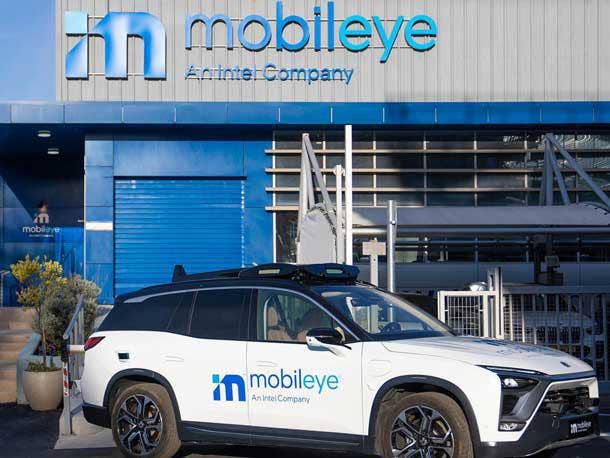4 Takeaways As Intel Eyes Reported $50B Mobileye IPO
As Mobileye lays out its own expansion efforts, Intel says it intends to hold on to its majority stake in the company to gain a foothold in the emerging autonomous vehicle market.

Intel’s Mobileye division has filed with the U.S. Securities and Exchange Commission for an initial public offering, and Reuters is reporting the company could be valued as high as $50 billion.
Intel bought the Israel-based self-driving technology company in 2017 for about $15.3 billion as it sought new revenue streams to support its increased chip manufacturing ambitions. The deal brought Mobileye, which at the time had been listed on the New York Stock Exchange, back into private status.
Intel was placing a bet on huge interest in automated driving with Mobileye’s camera-based self-driving system with adaptive cruise control and lane change assistance. The company’s client list includes BMW, Volkswagen, Nissan, Honda and General Motors.
No date has been set for the IPO, but Intel has said it intends to take the company public in mid-2022.
Here are four top takeaways from the planned Mobileye IPO.
Solid Financials Expected
When analysts predicted a $50 billion valuation back in December, the market looked a bit different. It’s unclear if investors would place that level of confidence in a company given the current financial climate and geopolitical atmosphere with Russia’s recent Ukraine invasion sparking worldwide fears of financial turmoil.
And Mobileye’s confidential SEC filing means it won’t have to show current financials right away. But the last update from Intel CEO Pat Gelsinger sounded promising. He said in December that Mobileye had posted record 2021 gains that showed a 40 percent revenue increase. Mobileye’s full-year revenue in 2020 was $967 million. The Wall Street Journal reported the company generated revenue of $1.4 billion in 2021.
IPO Could Serve As A Market Barometer
Analysts will be watching the Mobileye IPO to see if the company can pull the IPO market out of a serious slump during a tough bear cycle. With billions of potential capital funds looking for IPO exit, companies might see Mobileye’s success or failure as a sign of things to come and reference for their own filings.
Intel’s Giant Gamble
At its Investors Day event in February, Intel said it would take a huge margin hit as it ramps up production capabilities for future growth in its chip business. During a marathon three-hour presentation last month, Gelsinger detailed an expensive comeback plan that would roll out over the next four years.
Intel said it intends to hold on to its majority stake in Mobileye to gain a foothold in the emerging autonomous vehicle market. It surely doesn’t hurt Intel’s case that semiconductors are expected to represent 20 percent of a premium vehicle’s total material cost by 2030, according to joint research by Roland Berger, McKinsey and Intel.
Mobileye Sets Sights On Future
Mobileye’s business has boomed despite a tumultuous pandemic economy. The company has expansion plans in Israel to support its EyeQ chip system, which helps improve the processing of dozens of sensors, including high-resolution cameras and radars. This technology will help cars with obstacle classification, a key concern for the future of autonomous vehicle development.
Mobileye will work with automation company Udelv to build more than 35,000 Mobileye-driven delivery vehicles by 2028, the company said. Operations will begin on those self-driving vehicles by 2023 and Mobileye said in a release that the deal is “the first large-scale deal for a self-driving system and signals that Mobileye Drive is ready for commercial deployment in a solution involving the autonomous movement of goods and people.”